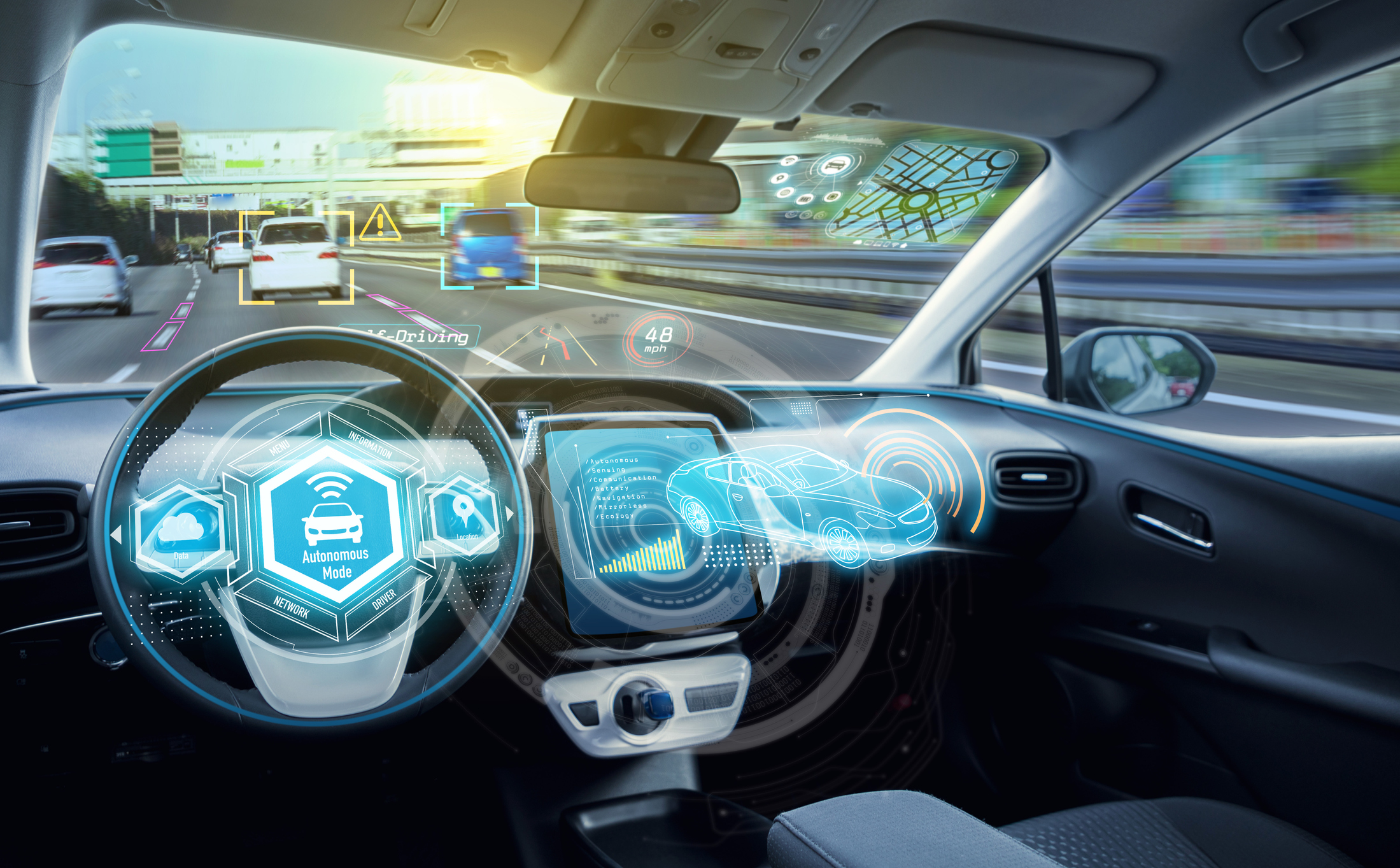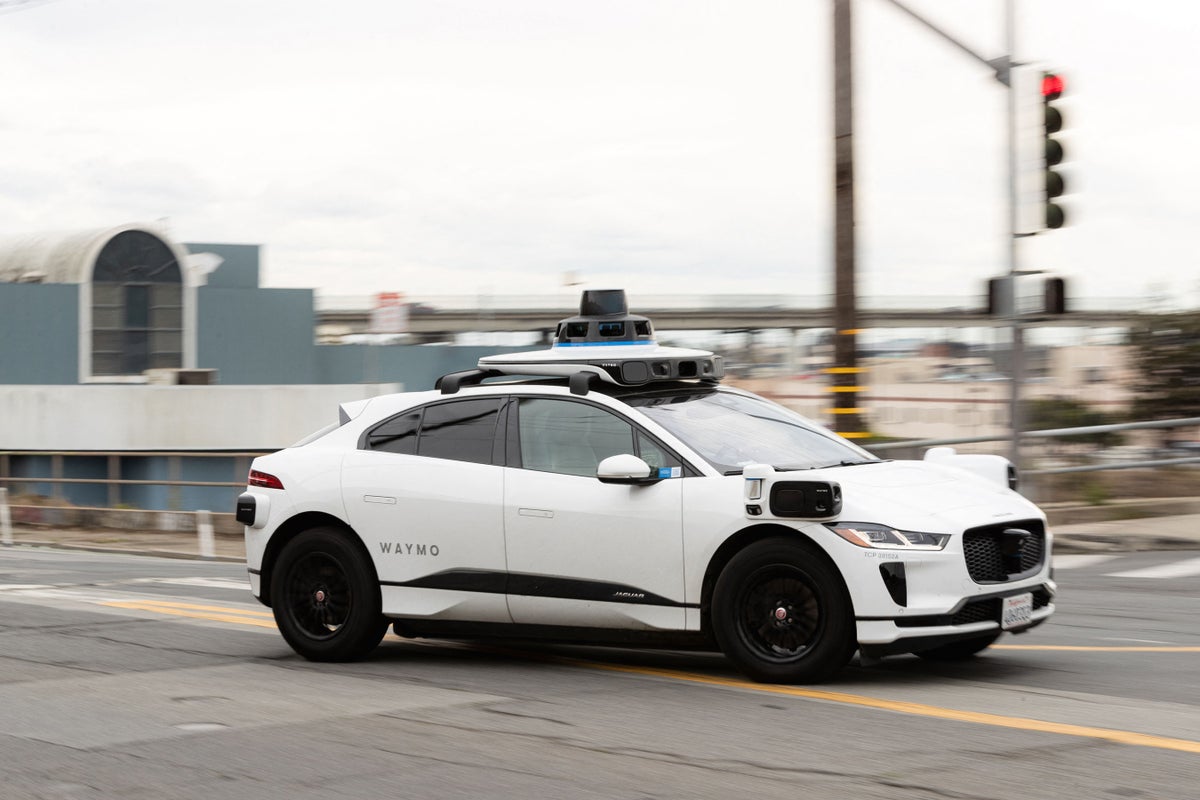Autonomous vehicles are self-driving cars that use sensors, cameras, and AI to navigate without human intervention. They promise safer and more efficient transportation.
Autonomous vehicles represent a groundbreaking shift in transportation technology. These self-driving cars utilize advanced sensors, cameras, and artificial intelligence to navigate roads and make real-time decisions. This innovation aims to reduce traffic accidents, lower emissions, and improve traffic flow. Major companies are investing heavily in this technology, signaling a future where human drivers might become obsolete.
The development of autonomous vehicles also raises important questions about regulation, safety, and ethical considerations. As the technology advances, society must address these challenges to fully realize the benefits of self-driving cars.
Introduction To Autonomous Vehicles
Autonomous vehicles are changing the way we think about travel. These cars drive themselves using advanced technology. They promise a future with safer roads and less traffic.
What Are Autonomous Vehicles?
Autonomous vehicles are also known as self-driving cars. These vehicles can drive without human input. They use sensors, cameras, and software to navigate and control the car. Here are some key features:
- Advanced sensors and cameras
- Artificial Intelligence (AI)
- Real-time data processing
- GPS navigation
These features help the car understand its surroundings. The car can make decisions and follow traffic rules.
History And Evolution
The journey of autonomous vehicles started long ago. It began in the 1920s with early experiments. Here is a timeline of important milestones:
| Year | Milestone |
|---|---|
| 1920s | First experiments with radio-controlled cars |
| 1980s | Development of computer vision technology |
| 2000s | Google starts its self-driving car project |
| 2010s | Major carmakers invest in autonomous technology |
Today, many companies are testing self-driving cars. These cars are becoming more common on roads.
Autonomous vehicles use AI and machine learning. They improve their driving skills over time. The goal is to make driving safer for everyone.

Credit: www.autosinnovate.org
Technology Behind Autonomous Vehicles
Autonomous vehicles, also known as self-driving cars, use advanced technology. They rely on sensors, cameras, and machine learning algorithms to navigate. These technologies help the vehicle understand its surroundings. Let’s dive into the key components that make this possible.
Sensors And Cameras
Sensors and cameras are the eyes and ears of autonomous vehicles. They gather data from the environment. Different types of sensors are used for different purposes:
- Lidar: Uses laser beams to create a 3D map of the surroundings.
- Radar: Detects objects and measures their speed and distance.
- Ultrasonic Sensors: Helps with close-range detection like parking.
- Cameras: Capture images and videos to identify objects and road signs.
Each sensor type has a specific role. Together, they provide a complete picture of the environment.
Machine Learning Algorithms
Machine learning algorithms are the brain of autonomous vehicles. They process the data from sensors and cameras. These algorithms make decisions based on patterns and past experiences. Here’s how they work:
- Data Collection: Sensors and cameras collect data.
- Data Processing: Algorithms analyze the collected data.
- Decision Making: The vehicle decides its actions.
Machine learning helps the vehicle improve over time. It learns from each trip and gets better at understanding the environment. This continuous learning makes autonomous vehicles safer and more reliable.
| Technology | Function |
|---|---|
| Sensors | Gather data from the environment. |
| Cameras | Capture visual information. |
| Machine Learning Algorithms | Analyze data and make decisions. |
Safety Benefits Of Autonomous Vehicles
Autonomous vehicles promise to transform road safety. These vehicles use advanced technology to reduce accidents. This section explores the key safety benefits. We focus on the reduction in human error and improved reaction times.
Reduction In Human Error
Human error causes most traffic accidents. Autonomous vehicles can minimize these errors. They use sensors and cameras to monitor the road. This technology helps them make precise decisions.
Here are some key advantages:
- Constant Vigilance: Autonomous vehicles never get tired.
- No Distractions: They don’t use phones or eat while driving.
- Consistent Performance: They follow traffic rules without fail.
By removing human error, autonomous vehicles increase road safety.
Improved Reaction Times
Autonomous vehicles have faster reaction times than humans. They can detect and respond to hazards in milliseconds. This quick response can prevent many accidents.
Consider these points:
- Advanced Sensors: They detect obstacles immediately.
- Instant Braking: They apply brakes faster than humans.
- Collision Avoidance: They can steer away from danger quickly.
Faster reaction times make autonomous vehicles safer on the road.
| Human Drivers | Autonomous Vehicles |
|---|---|
| Prone to fatigue | Always alert |
| Easily distracted | No distractions |
| Slow reaction times | Quick response |
Challenges In Autonomous Vehicle Safety
Autonomous vehicles promise a future with fewer accidents and smoother traffic. Yet, they must overcome several safety challenges. These challenges stem from technical limitations and ethical considerations.
Technical Limitations
Autonomous vehicles rely on complex systems. These systems include sensors, cameras, and software. Each part must work perfectly for the car to drive safely.
- Sensors: Sensors detect objects around the car. But they can fail in bad weather.
- Cameras: Cameras help the car see. They struggle in low light or glare.
- Software: The software makes decisions. It can have bugs or errors.
All these components must work together seamlessly. Any failure can cause accidents. This makes technical reliability a key challenge.
Ethical Considerations
Autonomous vehicles also face ethical challenges. These involve decisions the car must make in critical situations. For example, the car must choose whom to protect in an accident.
Consider this scenario:
| Scenario | Decision |
|---|---|
| The car must avoid hitting a pedestrian. | Should it swerve and risk hitting a wall? |
| The car faces a sudden obstacle. | Should it brake hard, risking a rear-end collision? |
These decisions involve ethical dilemmas. Programmers must code the car to handle these situations. This raises questions about responsibility and morality.
Regulatory Landscape
The regulatory landscape for autonomous vehicles is complex. It involves multiple laws, policies, and regulatory bodies. Understanding these regulations is crucial for the future of self-driving cars.
Current Laws And Regulations
Current laws for autonomous vehicles vary by country and state. In the United States, the NHTSA (National Highway Traffic Safety Administration) plays a key role. They set safety standards and guidelines for car manufacturers.
In Europe, the EU has its own set of regulations. These are known as the General Safety Regulation. It focuses on safety features and driver assistance systems. Countries like Germany and the UK have specific laws too.
| Region | Regulatory Body | Key Regulations |
|---|---|---|
| United States | NHTSA | Federal Motor Vehicle Safety Standards |
| European Union | EU | General Safety Regulation |
| Germany | BMVI | Road Traffic Act |
| United Kingdom | DVLA | Automated and Electric Vehicles Act |
Future Policy Directions
Future policies are focusing on making roads safer. They aim to provide clear guidelines for autonomous vehicle testing and deployment. Governments are working on new laws to address data privacy and cybersecurity.
One key area is vehicle-to-everything (V2X) communication. This technology allows cars to communicate with each other and the road infrastructure. Policymakers are also considering ethical issues. These include decision-making in critical situations.
- Clear guidelines for testing and deployment
- Data privacy and cybersecurity laws
- Vehicle-to-everything (V2X) communication
- Ethical decision-making in critical situations
Overall, the regulatory landscape is evolving. It aims to ensure the safe integration of autonomous vehicles.

Credit: www.scientificamerican.com
Real-world Applications
Autonomous vehicles are not just a futuristic concept anymore. They are now finding real-world applications that enhance our daily lives and business operations. Let’s delve into some significant areas where these self-driving technologies are making a difference.
Urban Environments
In urban environments, autonomous vehicles offer numerous benefits. They can reduce traffic jams and make streets safer. Self-driving cars follow traffic rules strictly, lowering the chances of accidents. This technology also helps in efficient public transportation. Autonomous buses can follow set routes, ensuring timely arrivals and departures.
- Ride-sharing services: Companies like Uber are testing self-driving cars.
- Public transport: Autonomous buses and shuttles are in use.
- Last-mile delivery: Robots deliver packages in crowded cities.
Long-distance Freight
Long-distance freight transportation is another area benefiting from autonomous vehicles. These self-driving trucks can travel for hours without breaks. This increases efficiency and reduces costs for logistics companies. Autonomous trucks also help in minimizing human errors, making long journeys safer.
| Advantages | Details |
|---|---|
| Increased efficiency | Autonomous trucks can operate 24/7. |
| Reduced costs | Less need for human drivers. |
| Safety | Minimizes human error on long journeys. |
Adopting autonomous vehicles for freight can revolutionize the logistics industry. It promises faster deliveries and lower operational costs.
Public Perception And Acceptance
Autonomous vehicles are changing how people think about transportation. Public perception and acceptance play a crucial role. This section explores consumer trust and addresses concerns.
Consumer Trust
Building consumer trust is key for autonomous vehicle adoption. People need to trust the technology.
Several factors influence consumer trust:
- Safety: People need proof that autonomous vehicles are safe.
- Reliability: Consistent performance is crucial for trust.
- Transparency: Clear information on how the technology works builds trust.
Companies invest in safety tests and public demonstrations. These efforts help build consumer trust.
Addressing Concerns
Addressing public concerns is essential for acceptance. Common concerns include:
| Concern | Solution |
|---|---|
| Safety | Extensive testing and safety protocols |
| Job Loss | Creating new jobs in tech and maintenance |
| Privacy | Strong data protection measures |
Public education campaigns can help address these concerns. People need accurate information about autonomous vehicles.
By addressing concerns and building trust, the public will accept autonomous vehicles more readily.
Future Of Autonomous Vehicles
The future of autonomous vehicles holds immense potential. This technology promises to revolutionize transportation. It will impact our daily lives and the global economy. Let’s explore the key areas shaping this future.
Technological Advancements
Autonomous vehicles rely on cutting-edge technology. These include sensors, cameras, and artificial intelligence. These technologies work together to navigate roads safely.
- Sensors: They detect obstacles and changes in the environment.
- Cameras: They provide a 360-degree view around the vehicle.
- Artificial Intelligence (AI): AI processes data and makes driving decisions.
Advancements in these areas are rapid. They are making autonomous vehicles safer and more reliable. AI algorithms are getting better at predicting and reacting to road conditions.
Global Impact
Autonomous vehicles will affect many aspects of our world. They promise to reduce traffic accidents significantly. Human error causes most accidents. Removing human drivers can save many lives.
These vehicles also impact the environment. Electric autonomous vehicles produce fewer emissions. This shift can reduce air pollution and combat climate change.
Economic benefits will be substantial too. Autonomous vehicles can reduce transportation costs. They can also improve logistics and supply chains.
| Area of Impact | Potential Benefit |
|---|---|
| Safety | Fewer accidents and fatalities |
| Environment | Lower emissions and pollution |
| Economy | Reduced transportation costs |
Autonomous vehicles will change urban planning too. Cities might have fewer parking lots. Roads could become more efficient with better traffic flow.

Credit: www.wired.com
Frequently Asked Questions
Do Fully Autonomous Cars Exist?
Fully autonomous cars do not yet exist. Current self-driving technology still requires human supervision and intervention.
Is A Tesla An Autonomous Vehicle?
Tesla vehicles are not fully autonomous. They offer advanced driver-assistance features like Autopilot and Full Self-Driving, but require driver supervision.
What Are Autonomous Vehicles Examples?
Examples of autonomous vehicles include Tesla’s self-driving cars, Google’s Waymo, Uber’s self-driving taxis, and Nissan’s ProPilot.
What Is The Difference Between Autonomous And Automatic Cars?
Autonomous cars can drive themselves using AI and sensors. Automatic cars only handle gear shifts and require human control. Autonomous cars are self-driving; automatic cars are not.
Conclusion
Autonomous vehicles are transforming the future of transportation. They promise increased safety, efficiency, and convenience. As technology advances, self-driving cars will become more prevalent. Embracing this innovation can lead to significant benefits for society. Stay informed and prepared for the exciting road ahead with autonomous vehicles.

